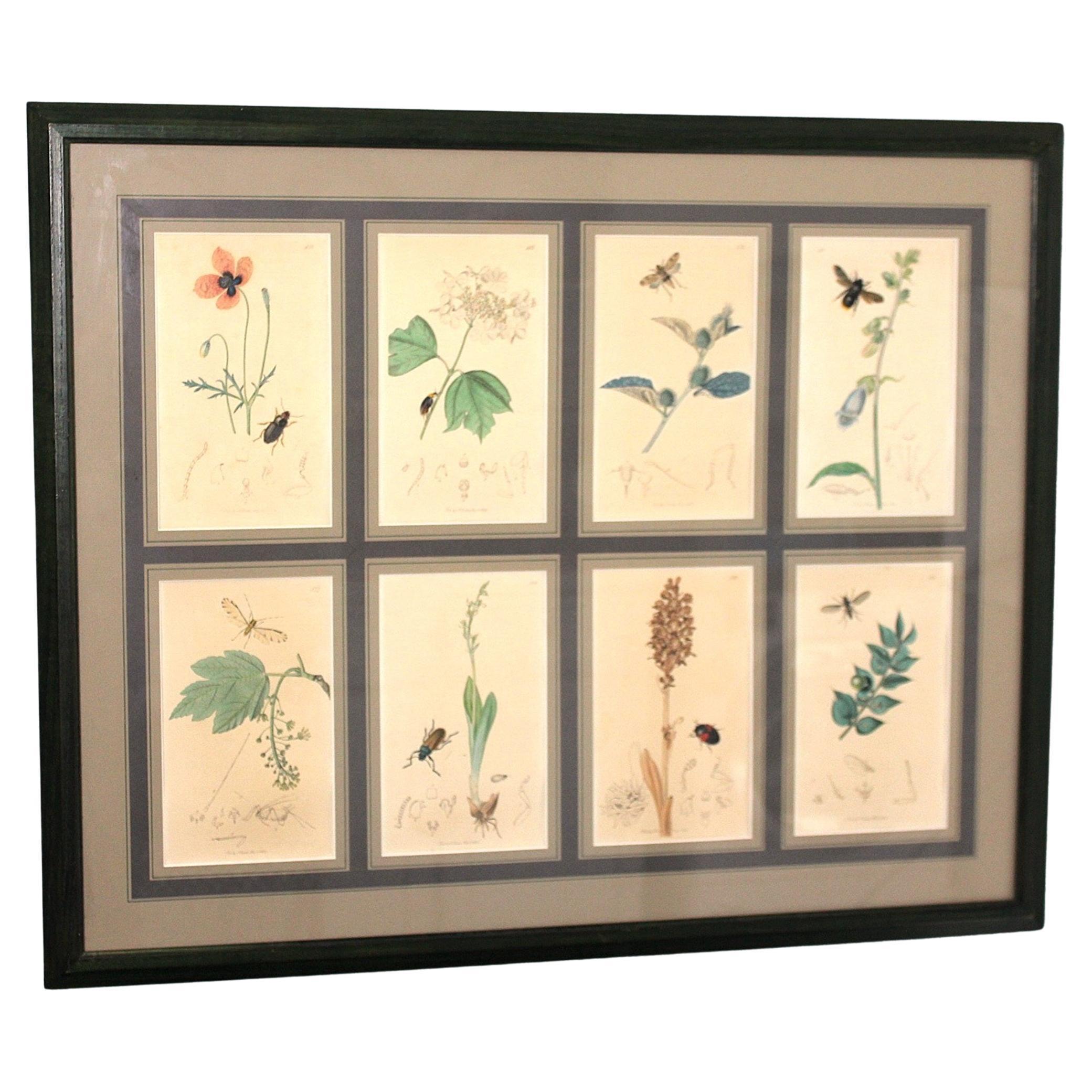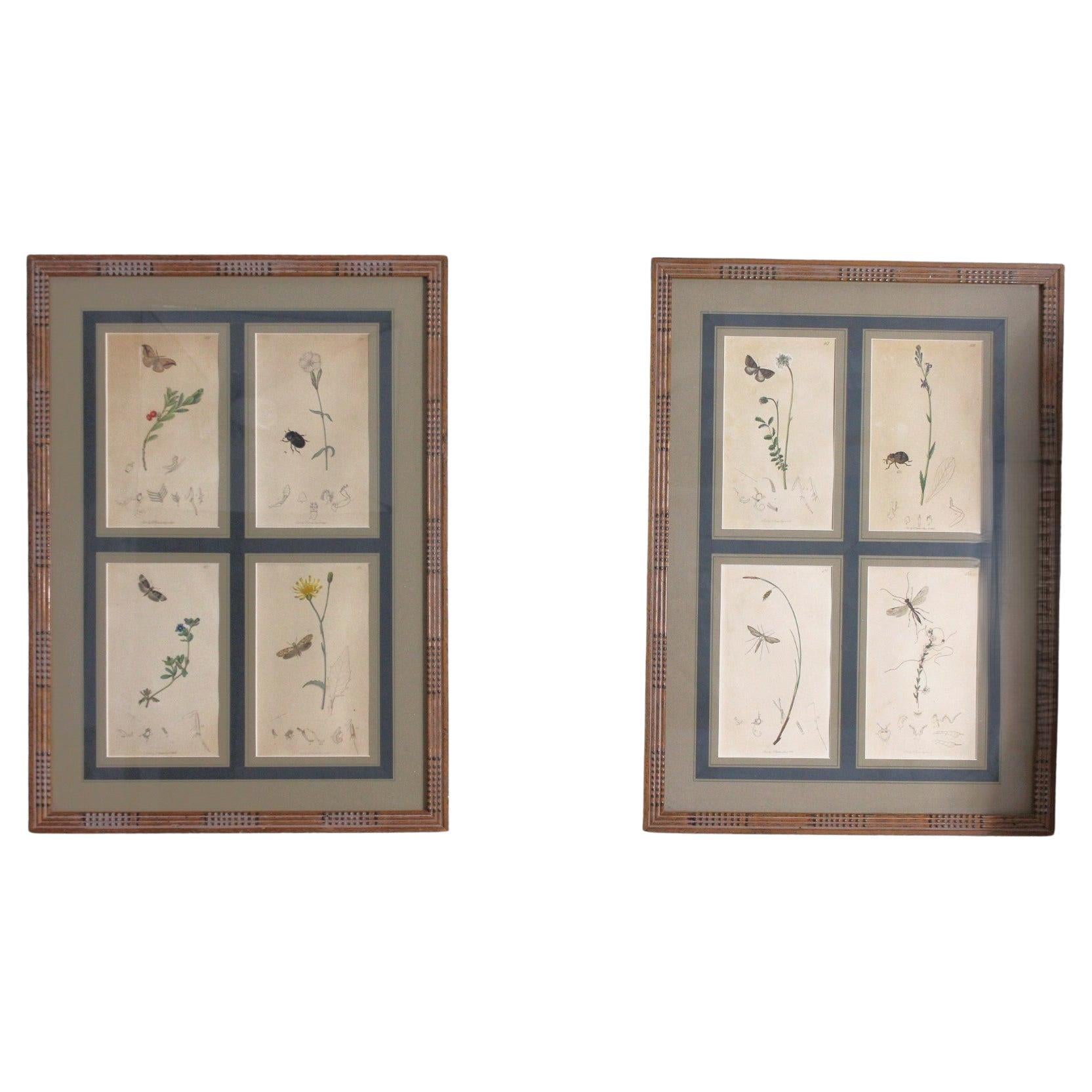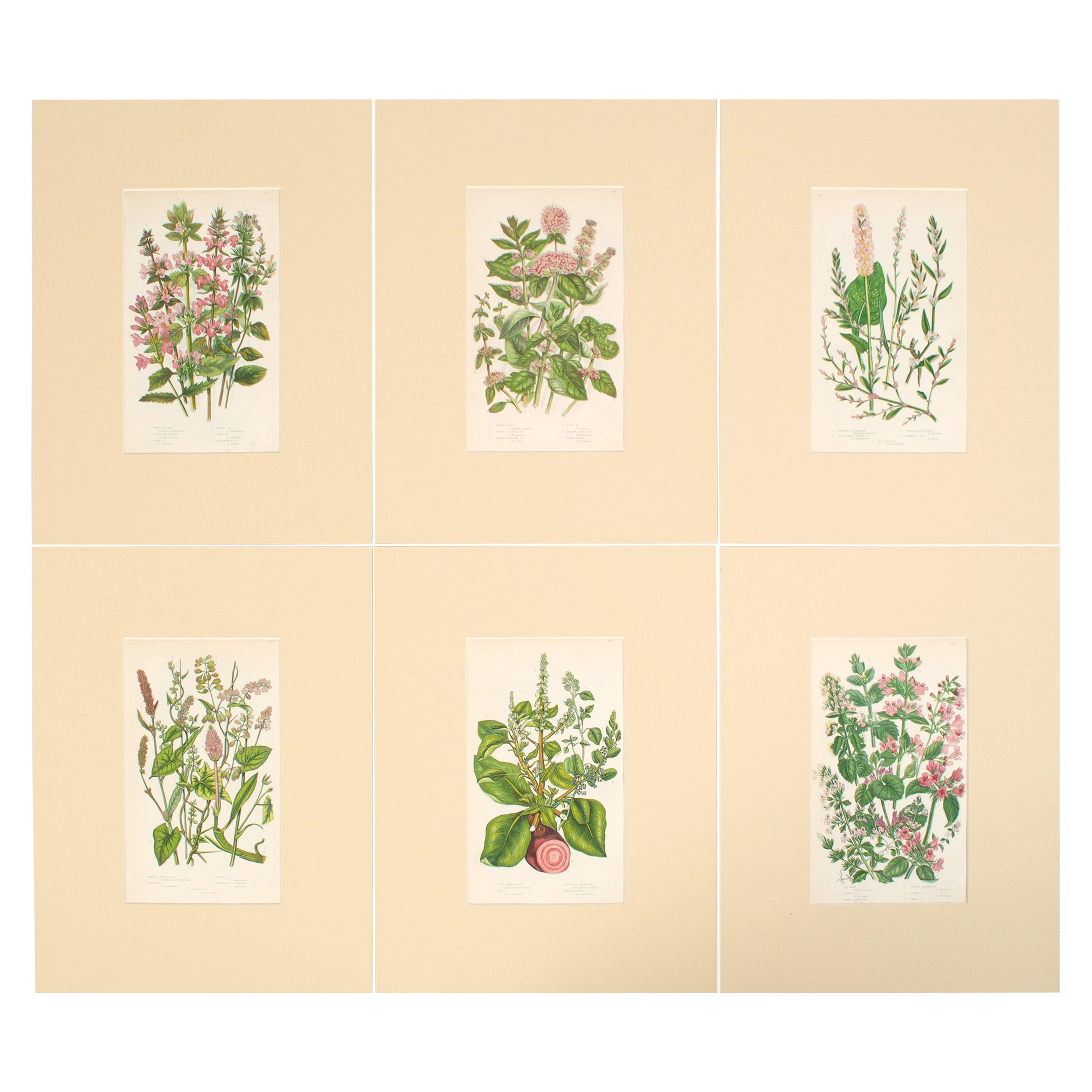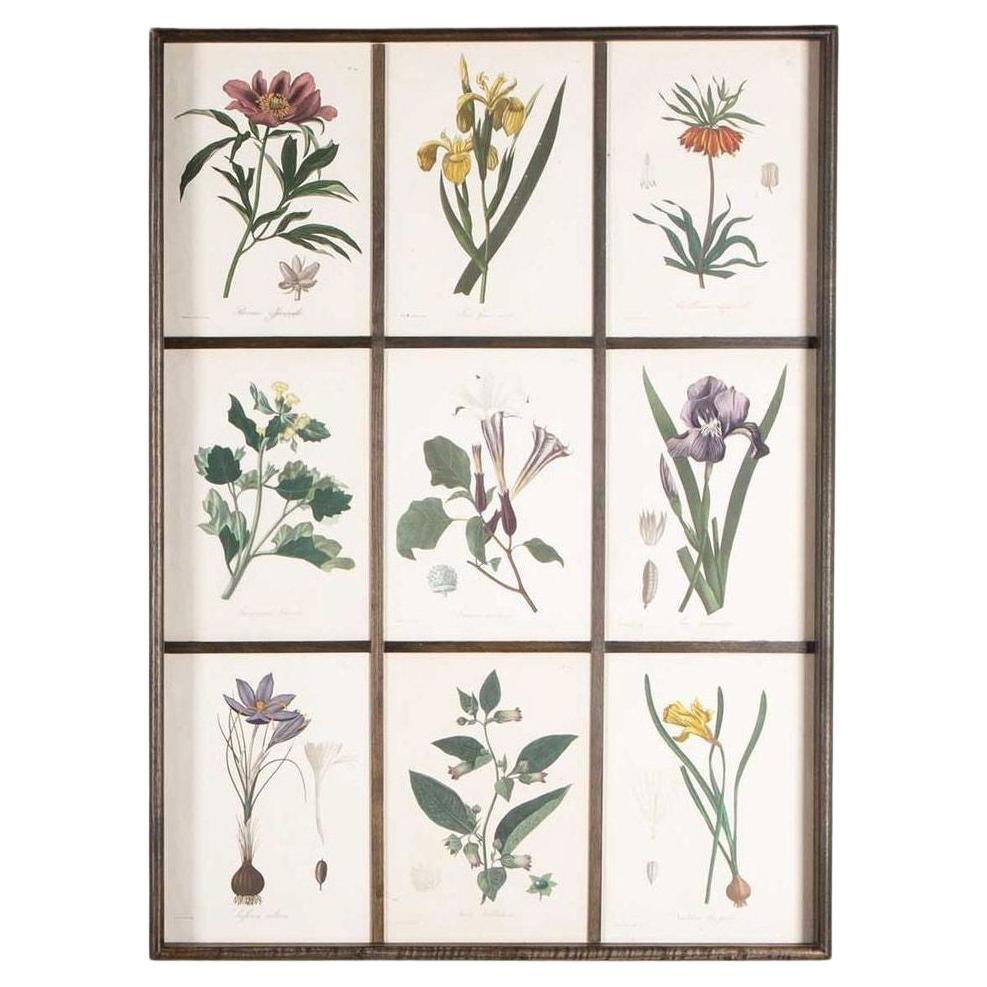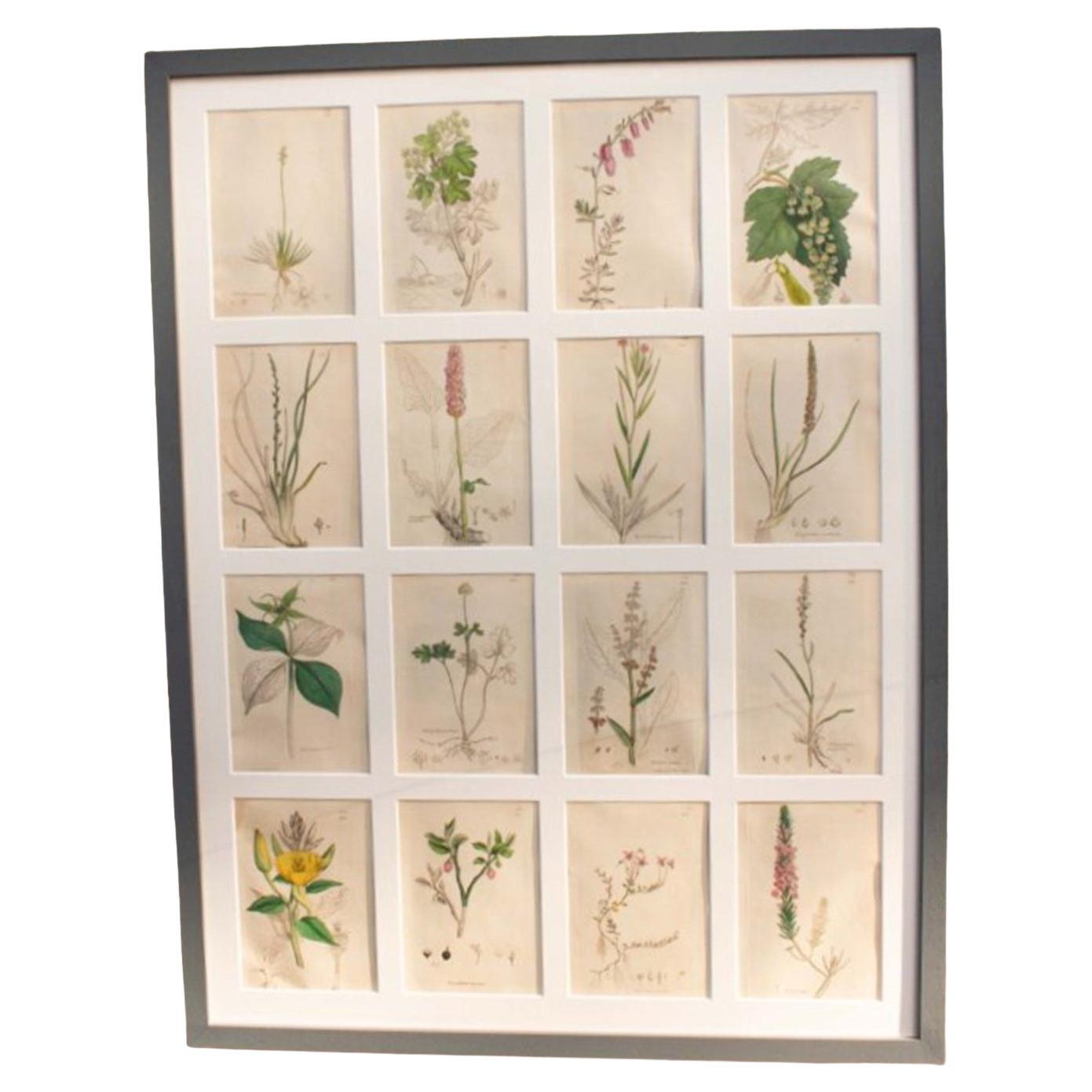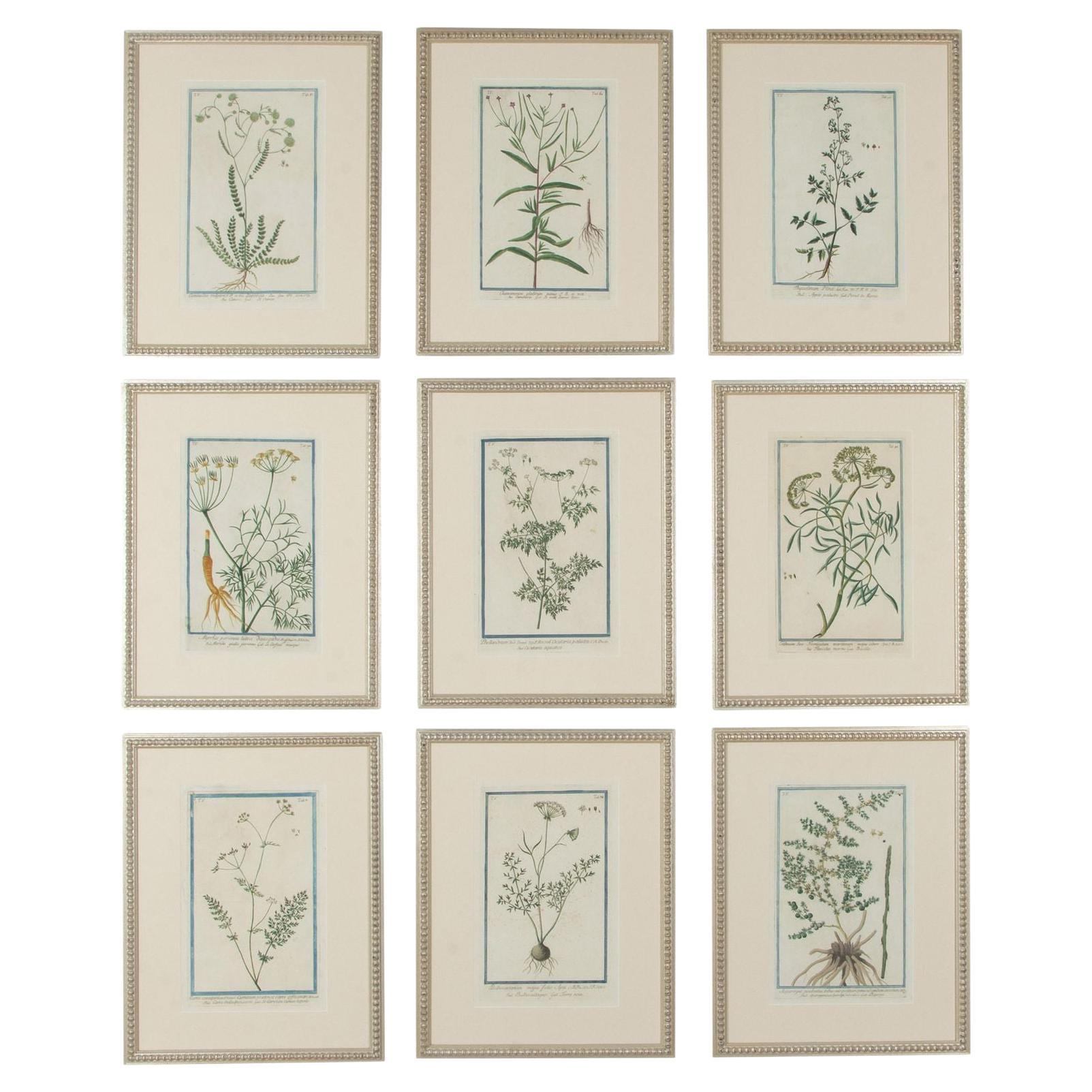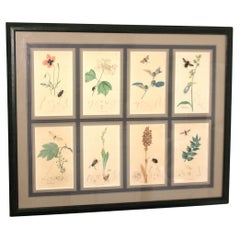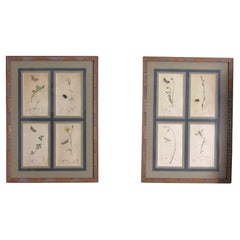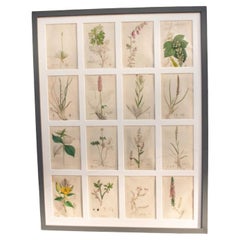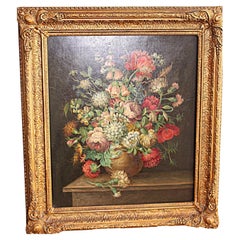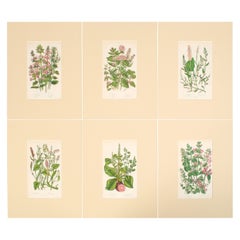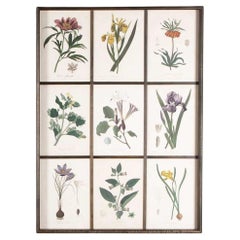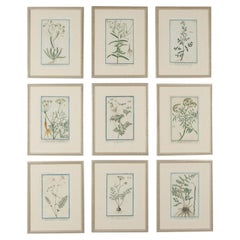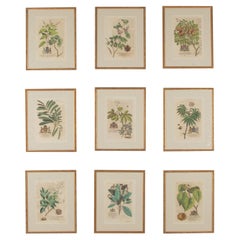Items Similar to Set of 8 19th Century Botanical & Insect Engravings by John Curtis (Framed)
Want more images or videos?
Request additional images or videos from the seller
1 of 16
Set of 8 19th Century Botanical & Insect Engravings by John Curtis (Framed)
$2,213.99per set
£1,650per set
€1,908.77per set
CA$3,111.43per set
A$3,383.75per set
CHF 1,782.63per set
MX$41,096.25per set
NOK 22,411.31per set
SEK 21,008.79per set
DKK 14,330.47per set
About the Item
19th Century Botanical Engravings: A Timeless Art Form
The Legacy of John Curtis and 19th-Century Botanical Engravings
🖋 Provenance Story – 19th Century Botanical Engravings with Insects, after John Curtis
These prints came from one of those treasure-hunt mornings — a private viewing at a longstanding dealer’s flat in Bloomsbury, stacked wall-to-wall with portfolios. In the corner, bound in archival sleeves and nearly forgotten, was a near-complete set of 19th-century botanical engravings — not just florals, but exquisite examples with entomological studies woven in: beetles nestled into petals, butterflies brushing pollen from stamens. Scientific. Romantic. Utterly mesmerising.
At the bottom of several plates was the unmistakable signature: J. Curtis. John Curtis, the renowned illustrator behind the Botanical Magazine, is a name synonymous with Victorian natural history and fine draftsmanship. His engravings — hand-coloured, scientifically meticulous — were once published to accompany botanical texts but quickly became collectable in their own right. These weren’t just records. They were declarations of awe for the natural world.
What made these particular pieces stand out was the inclusion of insects. It elevates each work, not just a study of flora, but an entire micro-ecosystem. Delicate, deeply observational, and full of movement. Each one feels like a moment captured rather than a specimen studied.
We’ve conserved them simply: mounted in minimalist, modern frames that allow the engraving to breathe — to be art, not just an archival reference. And they work anywhere. In modernist lofts, soft-toned bathrooms, layered gallery walls, or home offices that crave calm.
These are more than decorative prints. They’re time capsules of Victorian wonder — scientific elegance framed for the 21st century. For the collector, the design-lover, the nature devotee — they offer a way to anchor a space in natural history, in art, in quiet beauty.
John Curtis (1791-1862) is celebrated for his contributions to botanical art, particularly his work with 19th-century botanical engravings. In 1818, he became the principal artist of the Botanical Magazine, a prestigious publication of the era. Curtis’s detailed engravings often included both plants and insects, combining scientific accuracy with artistic beauty. His work stands as a testament to the skill and dedication required to produce these intricate illustrations.
The Art and Science of Botanical Illustrations with Insects
19th-century botanical engravings featuring plants and insects are remarkable for their detailed and vibrant depictions of nature. These illustrations were primarily created as scientific references to accompany botanical texts, yet they quickly gained popularity as decorative art pieces. Artists like John Curtis used traditional methods such as watercolour, pen, and ink to meticulously render the fine details of leaves, flowers, stems, and insects.
The inclusion of insects in these engravings added another layer of complexity, showcasing the interactions between flora and fauna. Artists paid close attention to the unique shapes, structures, and colours of their subjects, creating works that are as scientifically valuable as they are artistically stunning. These engravings provide a window into the natural world of the 19th century and continue to be cherished for their historical significance and aesthetic appeal.
Decorative Elegance: Botanical Prints in Modern Interiors
19th-century botanical engravings have transcended their original scientific purpose to become a cherished element in interior design. These timeless pieces seamlessly bridge the gap between the historical and the contemporary, offering a touch of natural elegance to modern spaces.
Enhancing Interior Spaces
Incorporating 19th-century botanical engravings into a home creates a focal point that blends history and sophistication. Their intricate designs and soft colour palettes complement various interior styles, from minimalist to industrial chic. Whether displayed as standalone pieces or arranged in a gallery wall, these prints add texture, depth, and a sense of organic beauty to any room.
Versatility Across Styles
The versatility of botanical engravings makes them suitable for diverse interior aesthetics. For instance:
In modern farmhouse interiors, they harmonise with natural materials like wood and linen.
In monochromatic or minimalist settings, they introduce a pop of colour and vintage charm.
In industrial spaces, they provide a striking contrast to raw elements like metal and concrete.
Applications in Design
Botanical engravings can be integrated into interiors in various ways:
Framed prints as wall art.
Upholstery patterns or fabric accents.
Inspirations for wallpapers or murals.
Their adaptability makes them ideal for spaces such as living rooms, kitchens, home offices, and even bathrooms, where they can bring life and character to the decor.
Timeless Appeal
Overall, 19th-century botanical engravings embody a unique blend of natural beauty, historical depth, and artistic elegance. Whether appreciated for their scientific roots or their decorative charm, these prints continue to inspire and elevate modern interiors, creating serene and inviting spaces that celebrate the harmony of art and nature.
Measurements
Width 77 cm
Height 66 cm
Condition
Very good, only very minimal age-related wear, as you would expect from the mid-19th century
Delivery
All our items will be packed with care to arrive safely to their new owners and are shipped with Track & Trace.
If you have any questions regarding an item or combined shipping, please feel free to ask.
We are happy to help you!
We kindly ask you to provide us with your phone number and email when placing your order. This will help the logistics services to locate you and give an estimated time of arrival.
We would also be delighted if you wished to make your own iries into shipping and would happily accommodate any courier of your choice.
Please note that delivery fees are based on front-door delivery. For an accurate delivery fee or any special requests or inquiries, please contact us. We look forward to hearing from you.
- Dimensions:Height: 25.99 in (66 cm)Width: 30.32 in (77 cm)Depth: 1.97 in (5 cm)
- Sold As:Set of 8
- Style:Victorian (Of the Period)
- Materials and Techniques:Paper,Engraved
- Place of Origin:
- Period:
- Date of Manufacture:1818
- Condition:Minor fading.
- Seller Location:Seaford, GB
- Reference Number:1stDibs: LU10376245217022
About the Seller
No Reviews Yet
Vetted Professional Seller
Every seller passes strict standards for authenticity and reliability
Established in 2021
1stDibs seller since 2025
Typical response time: 9 hours
- ShippingRetrieving quote...Shipping from: Seaford, United Kingdom
- Return Policy
Authenticity Guarantee
In the unlikely event there’s an issue with an item’s authenticity, contact us within 1 year for a full refund. DetailsMoney-Back Guarantee
If your item is not as described, is damaged in transit, or does not arrive, contact us within 7 days for a full refund. Details24-Hour Cancellation
You have a 24-hour grace period in which to reconsider your purchase, with no questions asked.Vetted Professional Sellers
Our world-class sellers must adhere to strict standards for service and quality, maintaining the integrity of our listings.Price-Match Guarantee
If you find that a seller listed the same item for a lower price elsewhere, we’ll match it.Trusted Global Delivery
Our best-in-class carrier network provides specialized shipping options worldwide, including custom delivery.More From This Seller
View AllBotanical Engravings by John Curtis 19th century
Located in Seaford, GB
19th Century Botanical Engravings: A Timeless Art Form
The Legacy of John Curtis and 19th-Century Botanical Engravings
🖋 Provenance Story – 19th Century Botanical Engravings with ...
Category
Antique 19th Century British Victorian Prints
Materials
Paper
$2,213 / set
19th Century Botanical Engravings of flowers and insects
Located in Seaford, GB
Pair of 19th-century British plant botanicals Engravings with Insects – John Curtis (1791-1862)
Sold as a pair - Please let us know your choice on your purchase order:
1 - Dandeli...
Category
Antique 19th Century English Victorian Prints
Materials
Paper
18th century James Sowerby botanical Engravings
By James Sowerby
Located in Seaford, GB
Rare Antique Botanical Prints by James Sowerby (1757–1822): A Timeless Tribute to British Flora
Step into the enchanting world of 18th-century botanical artistry with our exceptiona...
Category
Antique 1790s British Georgian Prints
Materials
Paper
$2,039 Sale Price / set
41% Off
Exquisite 19th Century English Still Life of wild flowers– Oil on Wood Panel
Located in Seaford, GB
A captivating and finely executed 19th-century English still life painting, rendered in oil on wood panel, depicting an abundant bouquet of mixed flowers in a terracotta urn. This hi...
Category
Antique 19th Century English High Victorian Paintings
Materials
Paint
Dutch 19th century Landscape Painting
By Andreas Schelfhout
Located in Seaford, GB
This charming oil-on-paper painting captures a serene landscape near Haarlem, evocative of Andreas Schelfhout's masterful Dutch Romantic style. The work features a quintessentially D...
Category
Antique Late 19th Century Dutch Late Victorian Paintings
Materials
Paint, Paper
Vintage pair of Donegal ireland watercolours by Frank Murphy
Located in Seaford, GB
Pair of Vintage Irish Donegal watercolours by Frank Murphy R.H.A., R.U.A.
This pair of Vintage Irish Donegal watercolours by Frank Murphy R.H.A., R.U.A. captures the timeless beauty of the Irish landscape. Murphy, a celebrated artist, is renowned for his ability to bring the Donegal countryside to life with his watercolours. These two paintings are fine examples of his skill and deep connection to Irish rural life.
First Watercolour: Thatched Farm Building
The first painting depicts a traditional thatched farm building with the Donegal mountains in the background. The artist uses a soft watercolour wash technique to create a serene atmosphere. The muted tones of the land blend seamlessly with the details of the thatched roof, evoking a sense of peace. Murphy expertly highlights the contrast between the quiet farm and the imposing mountains.
The artist’s signature is located in the lower left corner, with the mount inscribed, "nr Cresslough, Donegal." This specific location adds a personal touch, grounding the painting in a real place.
Second Watercolour: Thatched Houses by the Sea
The second Irish watercolour shows thatched houses by the sea, with the Donegal mountains rising in the background. The scene conveys the peacefulness of Donegal’s coastline. The calm sea and coastal thatched houses reflect the simplicity and beauty of rural Irish life. Murphy uses light and color to give life to the scene, drawing attention to the contrast between the sea and the homes.
The donegal coastline is painted in soft blues and greens, capturing its natural beauty. The mountainous backdrop creates a striking balance, highlighting the ruggedness of the land.
Key Features of Frank Murphy’s Work
Thatched Buildings: A recurring theme in Murphy’s paintings, reflecting traditional Irish architecture.
Donegal Landscape: Both pieces showcase the rugged beauty of Donegal’s mountains and coastline.
Watercolour Technique: Murphy’s skilful use of the watercolour wash technique creates a soft, atmospheric feel in his works.
Signed Artwork: Both paintings are signed by Frank Murphy and come with inscriptions identifying their locations.
Why These Watercolours Are Special
These Irish watercolours...
Category
Mid-20th Century Irish Paintings
Materials
Paper
You May Also Like
Set of Six English 19th Century Botanical Engravings, England, C.1880
Located in London, GB
A set of six English 19th century Botanical Engravings, England C.1880.
Mounted, ready to be framed.
Fine examples, in excellent condition commensurate of age.
Category
Antique Late 19th Century English Victorian Prints
Materials
Paper
Early 19th Century French Roques Botanical Engravings
Located in Gloucestershire, GB
Early 19th Century French engraved and hand coloured botanical studies.
Including Belladonna, Datura, Digitalis and Poppy from 'Phytography médicale, histoire des substances héroiqu...
Category
Antique Mid-19th Century French Country Prints
Materials
Paper
Collection of Nine Late 18th Century Italian Botanical Prints by Giorgio Bonelli
Located in Tetbury, Gloucestershire
Collection of nine late 18th Century Italian botanical prints by Giorgio Bonelli.
Giorgio Bonelli was an Italian physician and botanist who taught medicine in Rome. Bonelli publishe...
Category
Antique 18th Century Italian Prints
Materials
Paper
Collection of Nine 18th Century Tropical Botanical Engravings by Georg Dionysius
By Georg Dionysius Ehret
Located in Tetbury, Gloucestershire
Collection of nine 18th Century tropical botanical engravings by Georg Dionysius Ehret.
Hand coloured prints depicting local flora of Barbados. Each is dedicated to a prominent perso...
Category
Antique 18th Century German Prints
Materials
Paper
18th Century Large Hand-Tinted Botanical Lithograph
Located in Los Angeles, CA
18th century large hand-tinted botanical lithographs. Beautiful images to hang in powder room, framing doorways, kitchens or anywhere! The measurement below is for the frame only. ...
Category
Antique Early 18th Century English Prints
Materials
Paper
18th Century Botanical Prints Engravings, by P.J. Buchoz, 1776
By Pierre Joseph Buchoz
Located in Richmond, London
A rare set of six of exceptional quality 18th century hand-colored engravings
Buchoz, Pierre Joseph. Collection précieuse et enluminée des fleurs les plus belles et les plus curieuse...
Category
Antique Late 18th Century French Louis XVI Prints
Materials
Paper
More Ways To Browse
Antique Imperial Furniture Table
Antique Slate Clock Clocks
Antique Tv Stand
Apple And Pear Glass
Art Deco Bulldog
Art Deco Heron
Art Glass Seal
Asian Carved God
Asian Fabric Panels
Asian Painted Drawers
Asian Stone Head
Asian Wall Plates
Asian Warrior Sculpture
Atomic Orange
Aubock Tray
Audoux Et Minet
Automata
Bakelite Marbled
